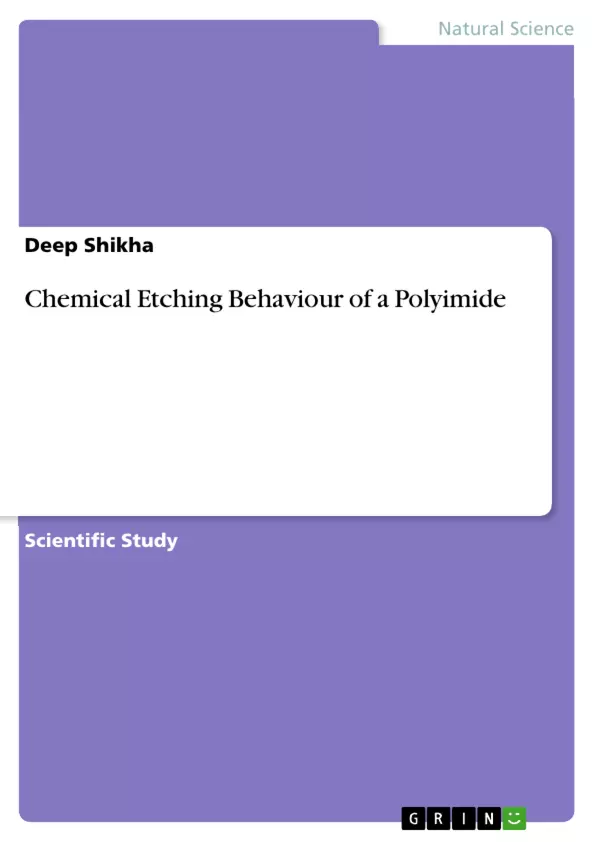Investigations were carried out on etching behaviour of an engineering polymer Kapton-H (4-4'-oxydiphenylene pyromellitimide). Kapton-H samples were subjected to etching in 4N NaOH at 400 °C and at 500 °C temperatures in pristine as well as irradiated form. Irradiation of pristine Kapton-H specimen was done using 75 MeV/nucleon O+ ion beam of fluence 1.875 x a trillion ions/cm2. The specimen was exposed to etchant for a period of 150 minutes. The effect of etching was observed as half layer thickness removed. Thickness measurements were made at etching cycles of 15 minutes each. It was observed that temperature and the irradiation has their effect on etching behaviour of Kapton-H. Study showed that the temperature results in the increased average bulk etch rate. The average bulk etch rate was also observed to increase with the irradiation of the sample.
Inhaltsverzeichnis (Table of Contents)
- CHAPTER 1 INTRODUCTION
- 1.1 KAPTON-H
- 1.1.1 Synthesis
- 1.1.2 Important properties
- 1.2 ETCHING MECHANISM OF KAPTON-H
- 1.3 LITERATURE REVIEW
- 1.1 KAPTON-H
- CHAPTER 2 METHODOLOGY
- CHAPTER 3 RESULTS AND DISCUSSION
- 3.1 RESULTS AND DISCUSSION
Zielsetzung und Themenschwerpunkte (Objectives and Key Themes)
This work investigates the etching behavior of Kapton-H, an engineering polymer, under different conditions. The study aims to understand how temperature and irradiation affect the etching rate of Kapton-H.
- The effect of temperature on the etching rate of Kapton-H
- The influence of irradiation on the etching behavior of Kapton-H
- The relationship between etching rate and the physical properties of Kapton-H
- The potential applications of Kapton-H in various industries
Zusammenfassung der Kapitel (Chapter Summaries)
Chapter 1 introduces the reader to Kapton-H, a polyimide with exceptional properties. The chapter outlines the synthesis and important properties of Kapton-H, highlighting its wide range of applications. It also delves into the etching mechanism of Kapton-H and provides a review of relevant literature.
Chapter 2 outlines the methodology used in the study, detailing the experimental setup and procedures employed to investigate the etching behavior of Kapton-H.
Chapter 3 presents and discusses the results obtained from the study. The chapter analyzes the effects of temperature and irradiation on the etching rate of Kapton-H, providing insights into the factors influencing the etching process.
Schlüsselwörter (Keywords)
Kapton-H, polyimide, etching, temperature, irradiation, etching rate, engineering polymer, applications, materials science, surface modification.
- Arbeit zitieren
- Deep Shikha (Autor:in), 2009, Chemical Etching Behaviour of a Polyimide, München, GRIN Verlag, https://www.hausarbeiten.de/document/307138


